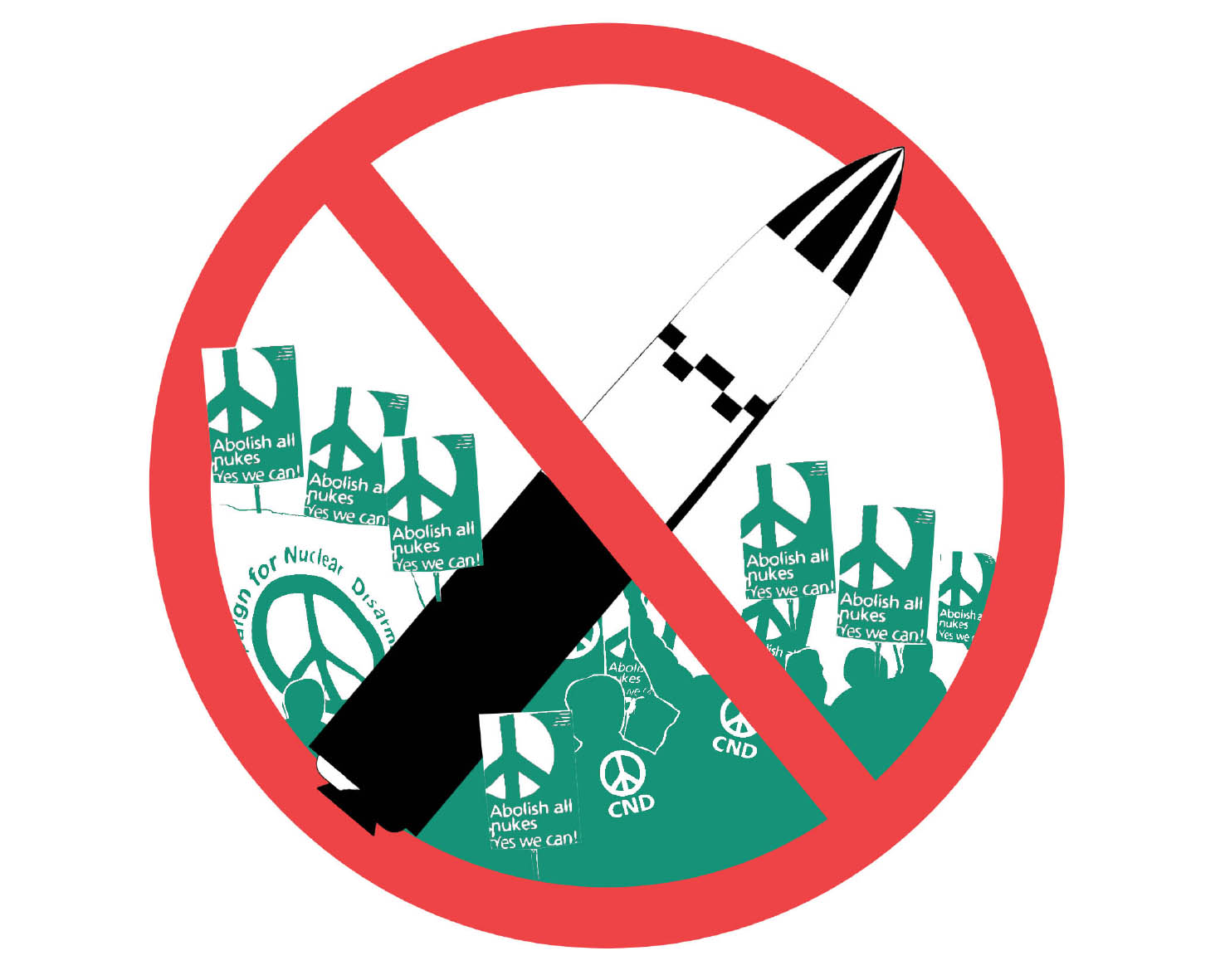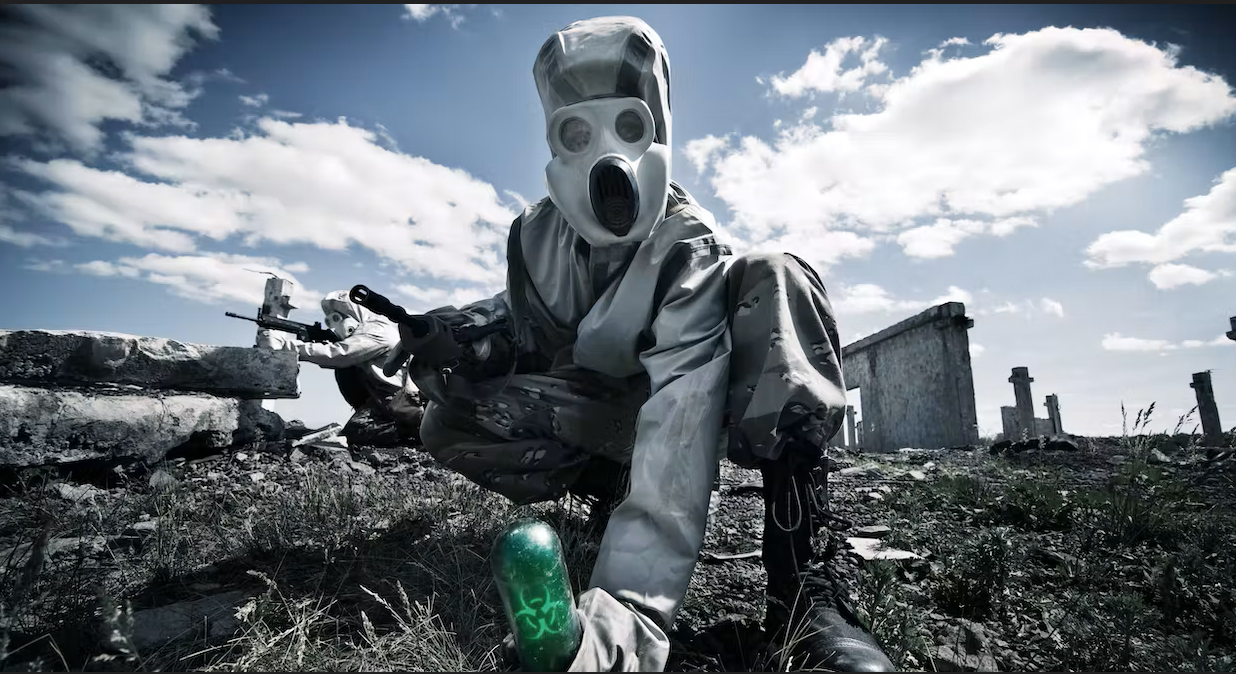By Jemimah Jehopio
Hiroshima and Nagasaki need no introduction – there is an almost immediate and synonymous association of these cities with the use and catastrophic effects of nuclear weapons. This association is not misplaced as these cities remain the first and last to experience the use of nuclear weapons in a war.[1] Notwithstanding the timeless reminder of the calamitous effect of nuclear weapons, almost 13,000 nuclear weapons are in existence today with several kept in “hair trigger” alert status meaning they are ready to be launched within minutes.[2]
Despite a comprehensive set of prohibitions on States participating in any nuclear weapons activities set out by the Treaty on the Prohibition of Nuclear Weapons (“the TPNW”), the TPNW has not been universally accepted and since it entered into force more than two years ago, there has not been significant progress by nuclear-armed states towards disarmament.[3] It is thus justified to make a case for complete disarmament of nuclear weapons, not from a state-oriented perspective, but from a humanitarian focus point.[4] The TPNW in its Preamble explicitly recognises that any use of nuclear weapons would be contrary to the rules of international law applicable in armed conflict, that is, International Humanitarian Law (“IHL”).[5] The applicable rules are those on distinction, proportionality and precaution.This article, in making an IHL case for the complete disarmament of nuclear weapons, does so on the basis of these three rules.
The principle of distinction is the cornerstone of IHL, which aims to protect the civilian population from the effects of hostilities .[6] It prohibits the use of weapons that are incapable of discriminating in their effects between military and civilian targets, either because they cannot be directed at a specific military objective, or because their effects cannot be limited as required by IHL.[7] A nuclear detonation releases a combination of powerful blast waves, intense heat between 60 – 100 million degrees centigrade, and high levels of ionised radiation, typically dispersed over a wide area.[8] The heat produced by the explosion is expected to start uncontrollable large-scale fires and firestorms.[9] The effects are aggravated by wind and other weather phenomena which carry the nuclear fallout far beyond the target area, even across national and continental borders.[10] It thus becomes apparent that even if a nuclear weapon were aimed at a specific military objective, it would not be possible to control and limit the force and effects of the nuclear detonation; military targets, civilians, and civilian objects would be struck without distinction. The International Court of Justice, put this succinctly in its 1996 advisory opinion, noting that the destructive power of nuclear weapons cannot be contained in either space or time and that the use of such weapons seems scarcely reconcilable with respect for the requirements of the law applicable in armed conflict.[11]
The second rule of proportionality prohibits the use of weapons which are likely to cause incidental civilian losses that would be excessive in relation to the anticipated concrete and direct military advantage.[12] A nuclear explosion results in a powerful blast wave, intense thermal heat, and radiation which cause severe, extensive, immediate and long-term incidental civilian casualties, including illnesses and cancers, as well as harm to vital civilian infrastructure.[13] The resultant disruption of services crucial to the survival of the civilian population, such as healthcare, water and power supply results in further deaths, injuries and suffering.[14] Imagine for a moment any concrete and direct military advantage that could justify “incidental” direct and indirect civilian harm and destruction on such a colossal scale as that caused by a nuclear explosion. It is extremely difficult to imagine such an advantage. Moreover, as the International Committee of the Red Cross (“the ICRC”) has often stated, the overarching aim of winning a war does not qualify as a concrete and direct military advantage to comply with the principle of proportionality.[15]
This closely relates to and ushers into discussion the third and final rule – precaution. This rule requires that in the conduct of military operations, constant care must be taken to spare the civilian population and civilian objects.[16] It requires that weapons used must avoid, or at least keep to a minimum the incidental harm to the civilians and civilian property and that the damage caused must not be excessive in relation to the concrete and direct military advantage anticipated.[17] On account of the indiscriminate and uncontrollable effects of a nuclear explosion, it becomes difficult to fathom how any military advantage could ever outweigh the incidental civilian harm, and offset the vast humanitarian concerns. Resultantly, the grave concerns about the compatibility of nuclear weapons usage with the rule of precaution are validated.
In conclusion, it is abundantly clear the threat nuclear weapons pose to human existence – irreversible harm, untold human suffering, and damage to future generations. The growing disapproval of nuclear weapons by the international community notwithstanding, nuclear-armed states increasingly threaten the use of nuclear weapons. The longevity of humankind demands that we move past the debate on who can or cannot possess nuclear weapons; the ultimate aim should be complete disarmament. Quoting former United Nations Secretary- General Ban Ki-moon, there are no right hands for wrong weapons. The nuclear legacy of Hiroshima and Nagasaki must end with them.
Jemimah Jehopio is a Ugandan trained lawyer who is currently pursuing the Bar course at the Law Development Centre, Kampala. She is the winner of the 18th edition of the ICRC writing competition for East African Universities. Jemimah also attended the 24th Course on International Humanitarian Law for Humanitarian Professionals and Policy Makers organised by the ICRC.
References
Council of Delegates of the International Red Cross and Red Crescent Movement, ‘Working towards the elimination of Nuclear Weapons: 2022-2027 Action Plan’ (2022) CD/22/8 <https://rcrcconference.org/app/uploads/2022/05/08_CoD22-Nuclear-Weapons-Background-document-FINAL-EN.pdf> accessed 21 February 2023.
International Committee of the Red Cross, ‘ICRC’s Legal and Policy Position on Nuclear Weapons’ (2022) 104 International Review of the Red Cross 1477.
International Court of Justice, ‘Advisory Opinion on the Legality of the Use by a State of Nuclear Weapons in Armed Conflict’ (1996).
International Law and Policy Institute, ‘Nuclear Weapons under International Law: An Overview’ (2014) <https://www.geneva-academy.ch/joomlatools-files/docman-files/Nuclear%20Weapons%20Under%20International%20Law.pdf> accessed 21 February 2023.
Julia Kapelańska-pręgowska, ‘Freedom From Nuclear Weapons? IHRL and IHL Perspective vs The State-Centred Approach’ (2020) The Age of Human Rights Journal 137.
Nils Melzer, International Humanitarian Law: A Comprehensive Introduction (International Committee of the Red Cross 2016).
Protocol Additional to the Geneva Conventions of 13 August 1949, and relating to the Protection of Victims of International Armed Conflicts (Protocol I), (adopted 8 June 1977, entered into force 7 December 1978) 1125 UNTS 3.
The Treaty on the Non-Proliferation of Nuclear Weapons (adopted 1 July 1968, entered into force 5 March 1970) 21 UST 483, 729 UNTS 161.
The Treaty on the Prohibition of Nuclear Weapons (adopted 7 July 2017, entered into force 22 January 2021) 729 UNTS 161.
[1] Council of Delegates of the International Red Cross and Red Crescent Movement, ‘Working towards the elimination of Nuclear Weapons: 2022-2027 Action Plan’ (2022) CD/22/8 <https://rcrcconference.org/app/uploads/2022/05/08_CoD22-Nuclear-Weapons-Background-document-FINAL-EN.pdf> accessed 21 February 2023.
[2] ibid.
[3] Julia Kapelańska-pręgowska, ‘Freedom From Nuclear Weapons? IHRL and IHL Perspective vs The State-Centred Approach’ (2020) The Age of Human Rights Journal 137.
[4] ibid.
[5] The Treaty on the Prohibition of Nuclear Weapons (adopted 7 July 2017, entered into force 22 January 2021) 729 UNTS 161.
[6] Nils Melzer, International Humanitarian Law: A Comprehensive Introduction (International Committee of the Red Cross 2016) 18.
[7] Protocol Additional to the Geneva Conventions of 13 August 1949, and relating to the Protection of Victims of International Armed Conflicts (Protocol I), (adopted 8 June 1977, entered into force 7 December 1978) 1125 UNTS 3 Art. 51(4) (hereafter AP. 1).
[8] International Committee of the Red Cross, ‘ICRC’s Legal and Policy Position on Nuclear Weapons’ (2022) 104 International Review of the Red Cross 1477, 1493; International Law and Policy Institute, ‘Nuclear Weapons under International Law: An Overview’ (2014) <https://www.geneva-academy.ch/joomlatools-files/docman-files/Nuclear%20Weapons%20Under%20International%20Law.pdf> accessed 21 February 2023.
[9] ibid.
[10] ibid.
[11] International Court of Justice, ‘Advisory Opinion on the Legality of the Use by a State of Nuclear Weapons in Armed Conflict’ (1996).
[12] AP. 1 Art 51(5)(b); Nils (n 6) 101.
[13] International Committee of the Red Cross (n 8) 1494.
[14] ibid.
[15] ibid.
[16] AP. 1 Art. 57; Nils (n 6) 102.
[17] ibid.


